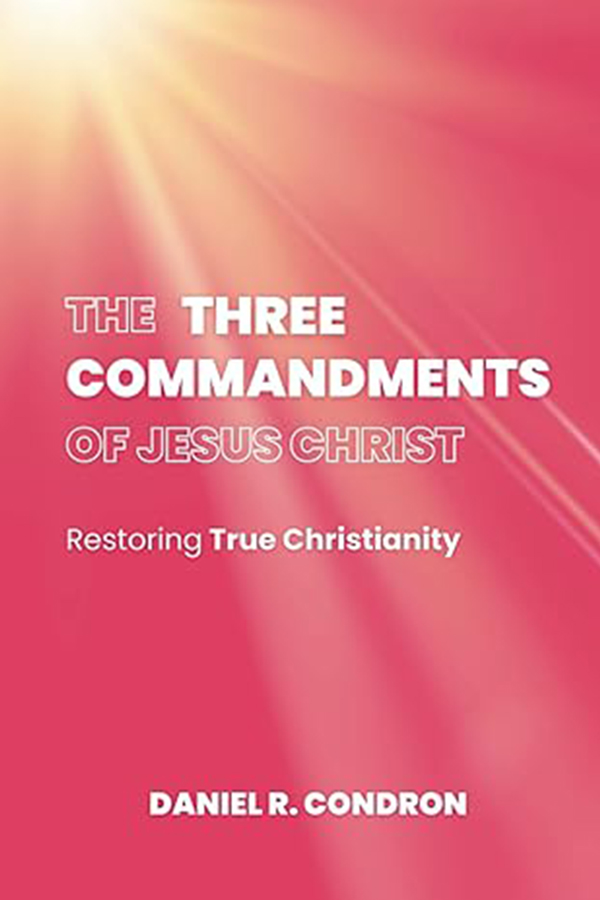The Three Commandments of Jesus Christ
Quis autem vel eum iure reprehenderit, qui in ea voluptate velit esse, quam nihil molestiae.

Restoring the Message of Love
Jesus was clear. Love God. Love your neighbor. Love one another. That is the message repeated across the four gospels. It is not hidden. It does not need translation.
Yet much of what has been built around Christianity has lost sight of this.
The Three Commandments of Jesus Christ returns to these original instructions without commentary from institutions, theologians, or traditions that came later. It points back to what Jesus actually said. What he repeated. What he told his disciples would fulfill the law.
What This Book Covers
This book is a close reading of the four gospels: Matthew, Mark, Luke, and John. Each commandment of Jesus is reviewed and placed in its proper scriptural setting. The repetition across books is highlighted.
Dr. Condron also includes examination of other writings that were excluded from the Bible—particularly the Gospel of Mary. These writings do not contradict the core message. They deepen it.
Rather than argue with existing doctrine, this book steps aside and returns to the words attributed to Jesus himself.
Love the Lord your God with all your heart, soul, and mind.
Love your neighbor as yourself.
Love one another as I have loved you.
These are the three commandments described in this book. Everything else begins here.
Why This Book Was Written
Dr. Condron spent decades studying Christian scripture and metaphysical texts. His intention has always been to understand—not to argue, not to convert, not to criticize.
Over years of reading and reflection, he kept returning to these three statements. Their clarity stood out. Their repetition made them hard to ignore. Their simplicity made them harder to follow.
This book is a record of that focus. It invites the reader to read Jesus’s words again, without inherited meaning or emotional charge. Just the message, spoken again.
Excerpt: Introduction
“It became clear that Jesus gave three commandments. Not ten, not one hundred. Three. He repeated them over and over. Yet these have been overshadowed by commentary.”
“If we return to the words, just the words, they still hold.”
The introduction invites the reader to set aside what they think they know and read again with fresh attention. The rest of the book moves through chapter and verse, offering the quotes themselves, with minimal interpretation.
Who This Book Is For
This book may resonate with readers who:
Left organized religion but still feel drawn to Jesus’s words
Are curious about the teachings of Jesus apart from dogma
Want a reminder that faith can be rooted in kindness and connection
Are exploring spiritual writing that centers on love instead of fear
There is no membership required. No conclusion demanded. Just a starting point and a suggestion: begin with love.
Reader Comments
“I was raised in church but stopped attending years ago. This book gave me a way back into the words of Jesus without the weight I used to carry.”
“This felt like Jesus, not religion.”
“The Gospel of Mary being included was unexpected. But the way it was presented made it feel whole, not like it was forcing something new.”
Notes on the Gospel of Mary
One chapter of the book discusses the Gospel of Mary. This writing was removed from canon but survives in fragments. It presents Mary Magdalene not just as a follower of Jesus but as one who understood his teaching deeply.
Her gospel is not presented as an authority over others. It is placed next to them. Her words point to love, too.
This inclusion may be new to some readers. Dr. Condron handles it without declaration. The text is there for those who wish to read it.

A Word from the Author
“Love is the one true message. I do not need it to be new. I just want it to be heard.”
Dr. Condron’s own words about this book are quiet. He is not building a ministry. He is offering a reading.
How to Buy
The book is available in paperback and Kindle format through Amazon.

